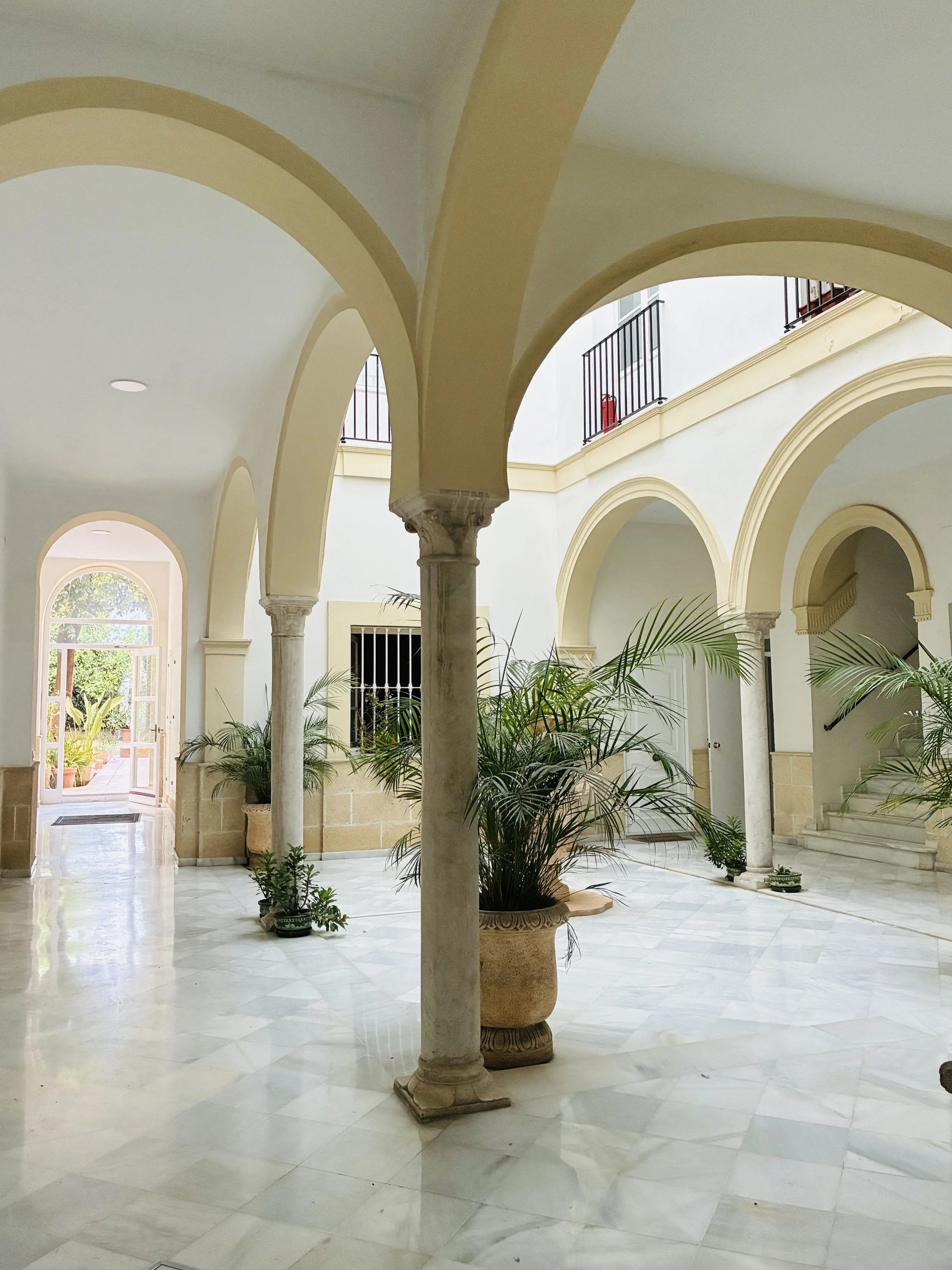How to buy a house in Jerez
Case study
Bruce and Jess couldn’t decide which house to make on offer on.
Location is everything
I could see the appeal of the large, sunny and well-appointment apartment that had attracted Bruce and Jess. They had already visited once and had asked me to come along to lend an opinion. On the face of it, it was ultra modern, quiet and in a lovely building. There was little to no work to be done to make it liveable and comfortable, and even though it was a short walk out of the centre it was still relatively close to everything they needed.
But knowing the Jerez neighbourhoods as I do, I could tell that the owner was pushing their luck. The apartment was overpriced. And after a lengthy discussion with the agent I could tell that they weren’t willing to budge. They had realised that although high, the figure they had in mind was similar to those of a few places currently for sale in other neighbourhoods. There’s no way an expat could know that the historical value of this particular neighbourhood was no match and they would likely buy the place on aesthetic appeal alone.
In Jerez, location is everything.
Needless to say, Bruce and Jess ultimately bought the other property, which was in a far better location even if it needed a little renovation. You can read more about the challenges that we faced and solved in this case study.
I’d like to make an offer
The little house in Calle Porvera was for sale for €250,000. Bruce, Jess and I had a good look around while I asked dozens of questions about the construction, the age of the fixtures and fittings, the wiring, the plumbing, the neighbours, the monthly fees … and was able to inform Bruce and Jess that this would be a great place to live on all counts. We came in at €230,000; the agent countered with €240,000, and we eventually agreed on €236,000.
What you might not know about buying a house in Andalucía. it’s common that agents here charge the buyer a commission as well as the seller – just for showing you the house! (but only if you end up buying it). It’s around 3% of the purchase price plus tax; you sign a form to agree to the commission when you attend the viewing. It’s just a different model. The total price you end up paying will still be completely fair by Spanish standards. Of course, it’s possible to negotiate the rate as long as we do it upfront.
Bruce and Jess were happy with a settlement period of three months, which was wise as the summer holidays were approaching and not much happens over the summer season. It also gave me plenty of time to develop a renovation plan and begin discussions with some potential renovation companies. Normally, one to two months is enough.
A visit to the agent’s office
About a week later we called in to the agent’s office to sign some documents.
The nota simple is a public document, a report that includes a verified official description of the property, how much is owed on it, the identity of the owners and any encumbrances or debt. The contrato de arras is a pre-agreement used to reserve the property through a deposit payment. It is very important to read carefully and understand this document, because it contains all the important information about the sale of the house.
In Spain the deposit is often paid to the owner himself, not to a legal firm or into some kind of escrow account. Don’t worry, it’s normal. If for some reason the contract falls through at the fault of the owner, he is required to pay back double the amount of the deposit.
Our agent Pedro went through every paragraph of the two documents and I made sure Bruce and Jess understood, translating along the way.
Appointment at the notary’s office
On handover day, the final step is a meeting between the owner, the buyer, the agent, and the notary, the person who checks and rechecks every minor detail about the contract, the title of the property, the bank figures, and can even make sure the utilities are transferred into the new owners’ names.
I asked Bruce and Jess to bring with them everything they needed: bank cheques for the owners and for paying out the existing mortgage, plus a small amount of cash for reimbursing the owners the proportion of the council tax they’d paid upfront.
You also must have the property’s energy certificate at hand. The energy certificate This is a document with a validity period of 10 years that the local government puts together for you. It provides an estimate of the efficiency in kilowatt hours per square metre per year based on floor area, heating and cooling type. Its purpose is simply to document precisely what kind of building you’re dealing with so everyone knows what’s what.
An hour later we left the notary’s office with the keys in our hand.
Both these meetings would have been very stressful for us, as our Spanish is still bad and the process is completely different to what we were used to. Having Marta hold our hand was most reassuring.
– Jess

